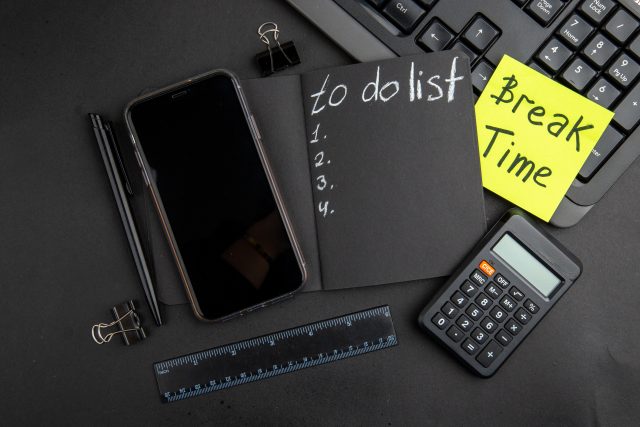Is your bank account constantly in the red? Are you overwhelmed by debt, living paycheck to paycheck, or simply unsure where your money goes each month?
You’re not alone—and the good news is: you can start turning things around in just 30 days.
This 30-day financial challenge isn’t about complicated investments or overnight success. It’s about getting back in control of your money, building healthy financial habits, and laying the foundation for lasting change.
Ready? Let’s begin.
Week 1: Gain Clarity and Control
Day 1: Write Down Your Money Goals
What do you want your money to do for you? Pay off debt? Build savings? Start a side hustle? Be specific. Write down 2–3 financial goals—short and long term.
Day 2: Track All Your Expenses
Print out last month’s bank and credit card statements. Categorize every transaction (housing, food, entertainment, debt payments). Awareness is the first step to improvement.
Day 3: Calculate Your Net Worth
List all your assets (cash, investments, property) and debts (loans, credit cards). Subtract liabilities from assets. Don’t be discouraged—this number is your starting line.
Day 4: Create a Zero-Based Budget
Allocate every dollar of your monthly income to a job—spending, saving, or debt payoff. Tools like YNAB or a simple spreadsheet work great.
Day 5: Identify 3 Expenses to Cut
Look at your spending. Pick at least three non-essentials to reduce or eliminate (streaming services, frequent takeout, impulse shopping).
Day 6: Make a Minimum Emergency Plan
If you don’t already have an emergency fund, aim to save $500–$1,000 over the next 2–3 months. This gives you breathing room when unexpected bills come up.
Day 7: Set Up an Organized Financial System
Set up a simple folder system (digital or physical) for bills, receipts, tax forms, and bank statements. Use a calendar to track due dates.
Week 2: Tackle Debt and Spending
Day 8: List Every Debt You Owe
Student loans, credit cards, auto loans—write down each one with the balance, interest rate, and minimum payment. Total them all up.
Day 9: Choose a Debt Payoff Strategy
Snowball method: Pay smallest balances first.
Avalanche method: Pay highest-interest debt first.
Choose one and commit to making extra payments where possible.
Day 10: Negotiate Your Bills
Call your credit card company to request a lower rate. Ask your internet or phone provider for a discount or promo. You may save $20–$100/month in minutes.
Day 11: Start a No-Spend Week
For the next 7 days, buy only essentials (groceries, bills, gas). No coffee runs, takeout, or online shopping. Track how much you save.
Day 12: Cancel Unused Subscriptions
Check your bank statements for recurring charges you forgot about or no longer need. Cancel or pause at least 2–3.
Day 13: Find $100 to Sell
Look around your home for items you don’t use—clothes, electronics, furniture. List them on Facebook Marketplace, eBay, or local apps. Put the cash toward your emergency fund or debt.
Day 14: Meal Plan for the Week
Plan 5–7 meals at home. Cook in batches. You’ll eat healthier and avoid impulse spending on takeout.
Week 3: Build Habits and Boost Income
Day 15: Open a High-Yield Savings Account
Separate your emergency or short-term savings in a high-interest online bank. This keeps it out of reach and growing.
Day 16: Automate Your Savings
Set up an automatic transfer to your savings account on payday—even if it’s just $10/week. Automate your financial wins.
Day 17: Track Your Daily Spending
Keep a daily spending log for 7 days. Use a notebook or an app. Seeing where your money goes in real time builds awareness and accountability.
Day 18: Brainstorm a Side Hustle
Write down your skills, hobbies, and interests. Think tutoring, freelancing, dog walking, delivery apps. Pick one to try this month.
Day 19: Boost Your Income (Even a Little)
Apply for freelance gigs, pick up a shift, or offer a paid service to friends and family. Even $50–$100 extra this week helps build momentum.
Day 20: Unsubscribe from Retail Emails
Marketing emails lead to impulse buying. Unsubscribe from tempting brands and clear your inbox. Out of sight, out of cart.
Day 21: Reward Yourself (Responsibly)
Choose a small, budget-friendly reward—like a favorite snack, a movie night at home, or a relaxing walk. Celebrate how far you’ve come.
Week 4: Plan for the Future
Day 22: Check Your Credit Report
Visit AnnualCreditReport.com for a free copy of your credit report. Look for errors, unfamiliar accounts, and areas to improve.
Day 23: Create a Debt Repayment Timeline
Use your chosen debt strategy to map out when each debt will be paid off. Visual timelines keep you focused and motivated.
Day 24: Make a Monthly Money Date
Schedule 30 minutes each month to review your finances—budget, savings, progress toward goals. Invite your partner if you share money.
Day 25: Review Your Insurance
Make sure you have renter’s or homeowner’s insurance, health insurance, and auto coverage. Compare quotes to see if you can save.
Day 26: Set Up Retirement Contributions
If you have access to a 401(k) or IRA, start contributing—ideally at least enough to get your company match. Even 1% helps.
Day 27: Read One Financial Book or Podcast
Choose a personal finance book or podcast to deepen your knowledge. Some great options: The Total Money Makeover by Dave Ramsey, I Will Teach You To Be Rich by Ramit Sethi, or The Money Guy Show podcast.
Day 28: Plan Next Month’s Budget
Look ahead to next month—project income, list upcoming expenses, and allocate savings. You’re now in control of your cash flow.
Day 29: Reflect on Your Progress
Review your goals from Day 1. What did you accomplish? What habits felt hardest? What worked best? Write it down.
Day 30: Set Your Next 30-Day Goal
Keep the momentum going. Choose a goal for the next month: pay off a credit card, save $300, increase income by $200—something specific and measurable.
Final Thoughts
Fixing your finances isn’t about perfection—it’s about progress. In just 30 days, you can transform your mindset, gain control, and start building the financial life you deserve.
This challenge is just the beginning. Keep going.
























